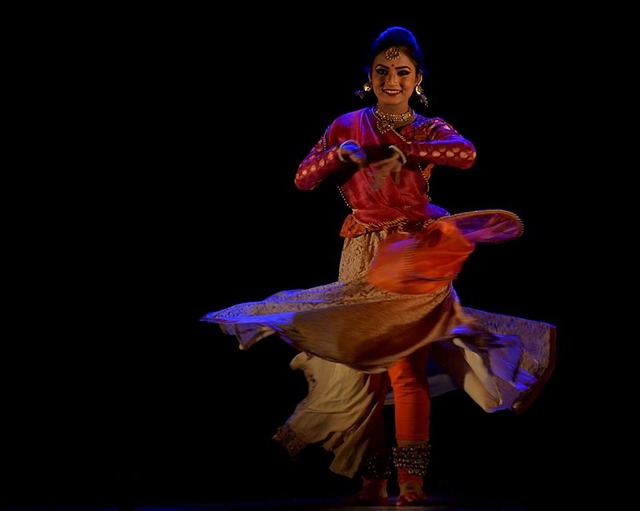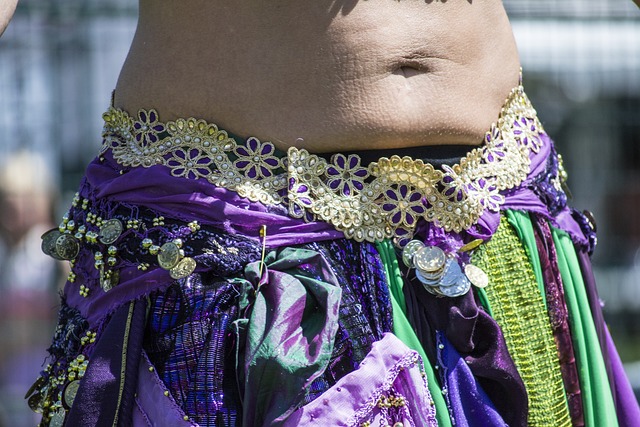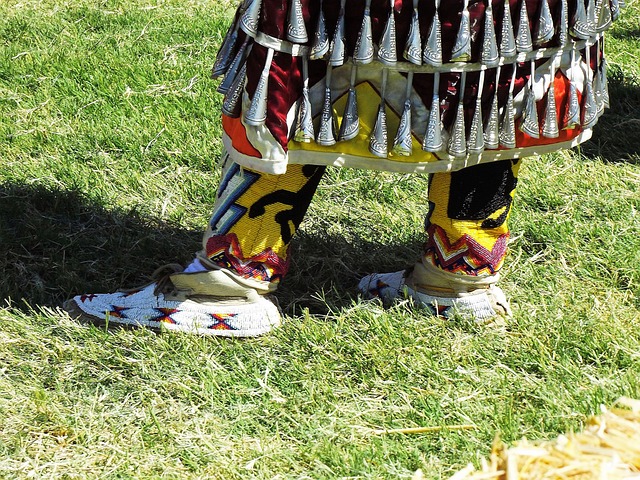Have you ever wondered about the diverse styles of belly dance? This ancient art form has evolved and branched out into various types across different cultures. Understanding the rich history behind these styles can help us appreciate their unique characteristics. In this article, we will explore three prominent types of belly dance: Egyptian Raqs Sharqi, Turkish Oryantal, and American Tribal Style.
Egyptian Raqs Sharqi, often referred to as “belly dance,” originated in Egypt and is characterized by its fluid movements emphasizing isolations and undulations of the torso. Turkish Oryantal, on the other hand, showcases a more energetic and playful style with intricate footwork, dynamic hip accents, and fast spins. Lastly, American Tribal Style (ATS) emerged in the United States during the 1970s as a fusion of various folkloric dances from North Africa and India.
By delving into each type’s unique qualities, origins, and cultural influences, we will gain a deeper understanding of how belly dance has become a global phenomenon that continues to captivate audiences worldwide. So let us embark on this journey into the world of belly dance and discover its mesmerizing diversity.
Key Takeaways
- Egyptian Raqs Sharqi is characterized by fluid movements, isolations, and undulations of the torso.
- Turkish Oryantal showcases energetic footwork, dynamic hip accents, and fast spins.
- American Tribal Style is a fusion of various folkloric dances and emphasizes group improvisation.
- Each type of belly dance has its own unique characteristics, costumes, and music.
Egyptian Raqs Sharqi

The Egyptian Raqs Sharqi is a captivating form of belly dance that mesmerizes spectators with its fluid movements and graceful expressions. Originating in Egypt, this traditional Middle Eastern dance has gained international recognition for its artistic beauty and cultural significance.
Egyptian Raqs Sharqi is characterized by intricate hip movements, graceful arm gestures, and precise footwork. Dancers often wear vibrant costumes adorned with sequins and beads that enhance the visual spectacle of their performance. The music accompanying the dance is typically composed of melodic rhythms played on traditional Middle Eastern instruments like the oud or tabla.
Historically, Egyptian belly dance was performed by professional dancers known as ghawazee who entertained at social gatherings and celebrations. Over time, it evolved into a respected art form that combines elements of folk traditions with modern influences. Today, it continues to be practiced by both professional performers and enthusiasts worldwide.
The appeal of Egyptian Raqs Sharqi lies in its ability to convey emotions through movement. Dancers use their bodies as instruments to express joy, sorrow, love, and longing. The sensual nature of the dance evokes a sense of intimacy between the dancer and the audience, creating a mesmerizing experience for all involved.
Egyptian Raqs Sharqi is an enchanting form of belly dance that showcases the rich cultural heritage of Egypt and the Middle East. With its fluid movements, expressive gestures, and emotional depth, this captivating art form continues to captivate audiences around the world.
Turkish Oryantal

This paragraph introduces a discussion on the Turkish Oryantal dance style, focusing on two key points: experiencing its lively and energetic nature and discovering its traditional costumes and music. Turkish Oryantal is known for its vibrant and dynamic movements that captivate the audience with its high energy levels. Additionally, this dance form is often performed in stunning traditional costumes adorned with intricate designs and embellishments, which reflect the rich cultural heritage of Turkey. The accompanying music for Turkish Oryantal is also an essential element, featuring traditional instruments such as the darbuka, saz, and ney that create a unique and captivating rhythm.
Experience the Lively and Energetic Dance Style
Moreover, belly dance enthusiasts can indulge in the vibrant and dynamic dance style that exudes an invigorating energy. Turkish Oryantal is not only visually captivating but also offers numerous benefits for both the mind and body. Here are three popular belly dance moves commonly seen in this lively style:
- Shimmy: This rapid shaking movement of the hips creates a mesmerizing vibration that engages the core muscles, promoting strength and flexibility.
- Figure 8: By tracing a figure-eight pattern with their hips, dancers enhance their coordination and isolations while toning the abdominal muscles.
- Turkish Drop: This dramatic movement involves quickly dropping to one knee from a standing position, showcasing agility and control while working the leg muscles.
Through these movements, Turkish Oryantal provides physical fitness benefits such as improved posture, muscle tone, and cardiovascular endurance. Additionally, it fosters self-expression and boosts confidence as dancers connect with their bodies in a joyful and energetic manner.
Discover the Traditional Costumes and Music
Immersing oneself in the world of Turkish Oryantal involves exploring the rich tapestry of traditional costumes and music that accompany this captivating dance style. Traditional belly dance costumes play a crucial role in capturing the essence and allure of Oryantal. These costumes typically consist of vibrant, flowing fabrics such as silk or chiffon adorned with intricate embroidery, sequins, and coins that create mesmerizing movements as the dancer sways to the rhythm. The costume’s design varies depending on the region and style of Oryantal being performed, but they all aim to accentuate the dancer’s movements while maintaining cultural authenticity.
Traditional belly dance music is an essential component that sets the mood for Oryantal performances. This music incorporates various instruments such as oud (a stringed instrument), darbuka (a goblet drum), and ney (a flute-like instrument). The rhythmic beats and melodies transport both dancers and spectators to a different time and place, evoking emotions ranging from joyous celebration to deep introspection. Additionally, traditional belly dance music often includes vocals that further enhance the overall experience.
Immersing oneself in Turkish Oryantal means delving into its enchanting world of traditional costumes and music. These elements combine to create a mesmerizing spectacle that captivates audiences worldwide.
American Tribal Style

American Tribal Style belly dance, characterized by its group improvisation and fusion of various dance styles, can be likened to a harmonious tapestry where each dancer’s movements seamlessly blend together like threads, creating a mesmerizing visual spectacle for the audience.
- Fusion Styles: American Tribal Style (ATS) incorporates elements from various dance forms such as flamenco, Indian classical, and Middle Eastern dances. This fusion creates a unique style that blends the rich cultural heritage of these different traditions.
- Improvisation Techniques: ATS emphasizes group improvisation rather than choreography. Dancers communicate through cues and gestures called “cues” or “lead changes,” allowing them to create spontaneous moves in synchronization with one another. This collaborative approach fosters a sense of unity and connection among the dancers.
- Costumes and Aesthetics: The costumes in ATS often feature vibrant colors, layers of flowing fabric, intricate jewelry, and ethnic-inspired accessories like turbans or headdresses. These visually striking outfits add to the overall allure of the performance.
- Music: The music used in ATS ranges from traditional Middle Eastern rhythms to modern world fusion beats. It sets the mood for the dance with its pulsating rhythms and melodic tunes, providing an enchanting backdrop for the dancers’ movements.
American Tribal Style belly dance is an embodiment of creativity and collaboration within a cultural context. Its fusion styles and improvisation techniques allow dancers to express themselves while honoring diverse traditions. Through their synchronized movements and captivating costumes accompanied by entrancing music, ATS offers an intimate experience that transports audiences into a world of rhythmic beauty and cultural appreciation.
Frequently Asked Questions
What are some common misconceptions about Egyptian Raqs Sharqi?
Common misconceptions about Egyptian raqs sharqi include the belief that it is solely a seductive dance form, when in fact it encompasses a wide range of emotions and artistic expressions. Cultural influences on belly dance are diverse and extend beyond stereotypes.
Are there any specific costumes or props used in Turkish Oryantal?
Common costumes used in Turkish oryantal include the bedlah, a two-piece costume consisting of a bra top and skirt, often adorned with sequins and beads. Traditional props used in this style of belly dance include veils, finger cymbals (zills), and canes.
How does American Tribal Style differ from Egyptian Raqs Sharqi and Turkish Oryantal?
American Tribal Style (ATS) differs from Egyptian Raqs Sharqi and Turkish Oryantal in terms of its group improvisation, earthy aesthetics, and fusion of various cultural influences. ATS emphasizes community connection while Raqs Sharqi showcases individual expression, and Turkish Oryantal reflects a mix of Middle Eastern, European, and Ottoman influences.
Are there any famous belly dancers known for performing Egyptian Raqs Sharqi?
Some famous belly dancers known for performing Egyptian raqs sharqi include Samia Gamal, Tahia Carioca, and Fifi Abdou. There are misconceptions about this dance style, including its portrayal in Western media as overly sexualized.
Can you provide some examples of music genres commonly used in American Tribal Style belly dance?
In American tribal style belly dance, fusion and electronic music genres are commonly used. It is important to dispel the misconception that Egyptian raqs sharqi is solely sexual in nature and lacks skill. Turkish oryantal often incorporates coin belts and veils as costumes or props. American tribal style differs from both Egyptian raqs sharqi and Turkish oryantal in terms of group improvisation and cultural influences. Some famous belly dancers known for performing Egyptian raqs sharqi include Samia Gamal and Fifi Abdou.
